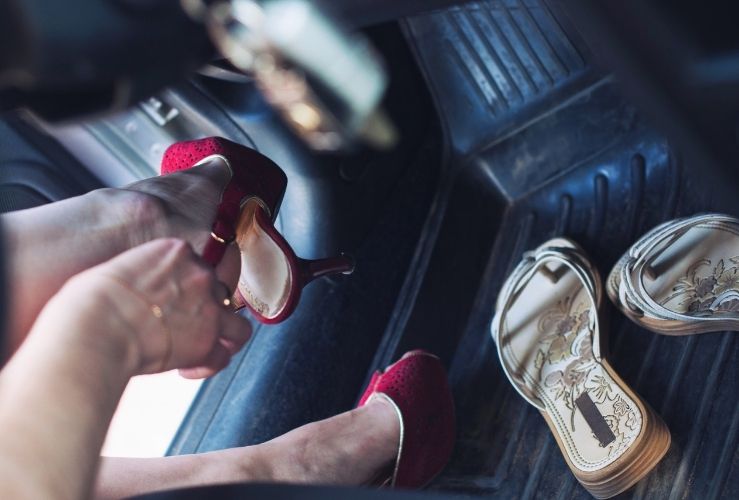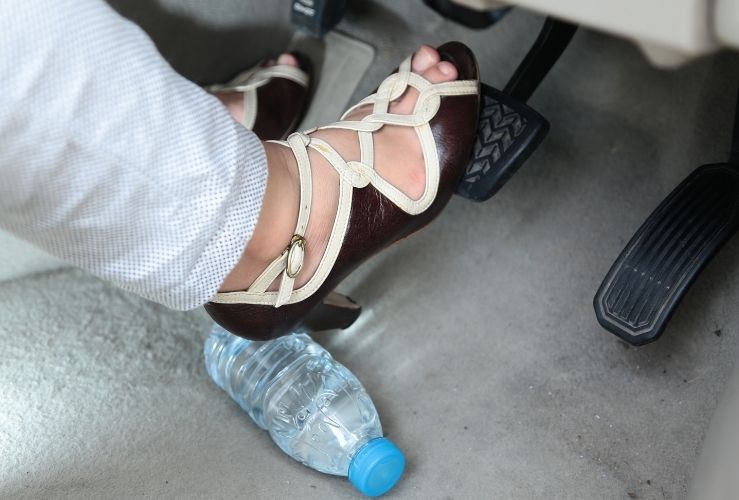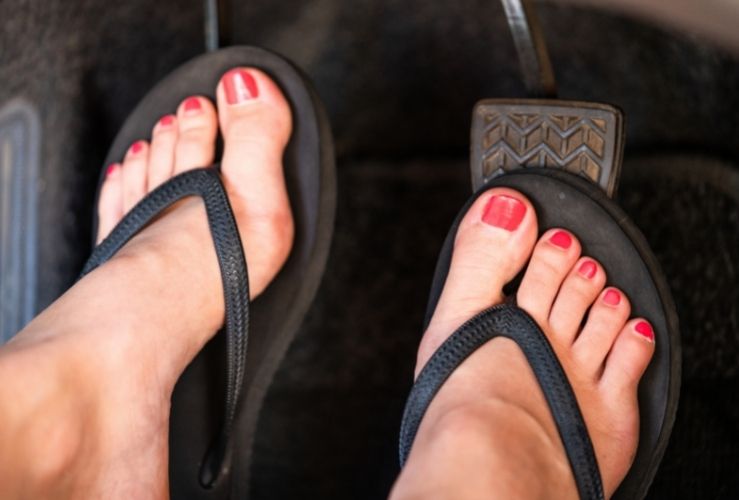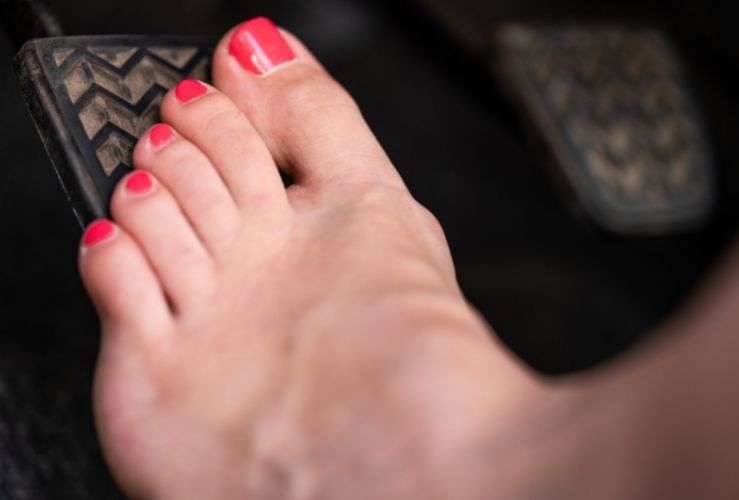What we wear behind the wheel can have a big impact on our ability to maintain full control of our vehicles. Wearing unsuitable footwear and clothing can make it harder to change gear, brake and turn. The Highway Code stipulates wearing "footwear and clothing which does not prevent you using the controls in the correct manner".
While wearing the following specific items is not technically illegal, if footwear or clothing inhibits your ability to control your vehicle and puts you, your passengers or other motorists at risk - then it is deemed illegal. If caught you may be handed a £100 fine, which can rise to £5,000 if the case goes to court. If footwear or clothing contributed to an accident that resulted in death or injury, the penalty could be considerably greater.

Here we look at some of the biggest no-nos when it comes to what you wear while driving.
Slippers are wonderful for mooching around the house, but they're not so great for the safe maneuvering of your one-tonne sports utility vehicle on the Queen's highway. Because most slippers are open-backed, your feet can slip out when using the pedals. They also offer very little grip, making it even harder to maintain control of your vehicle. Footwear with soles of less than 10mm are considered unsafe to drive in.

You won't find Lewis Hamilton wearing a pair of stilettos while driving his F1 car - or at least we don’t think you will. That's because the high heel is up there in the premier league of footwear-to avoid-while-driving, vying for the top spot with their less glamorous cousin, the slipper. Effectively pointing your toes in high heels is tricky due to the slip-on design, while shifting between pedals is difficult for the same reason - made worse by the heel getting in the way. Wearing heels while driving also requires more muscle activation, which can tire the ankle joints - never a good thing when you're in charge of 1,000 kilos of steel, aluminium and rubber!
If you need to wear high heels at your destination, it's a good idea to store them in the boot and wear a sensible pair of shoes enroute, before slipping on the heels when you arrive.

Design wise, flip flops are the antithesis of the high heel - but they're similarly bad as driving footwear. They can get wedged under the pedal or slip off. As mentioned, footwear with soles less than 10mm thick are deemed unsafe, so keep them in the back for later.
At first glance a pair of heavy work boots might seem ideal for driving. While they can help you achieve greater braking force, wider boots can hit two pedals at once - not an ideal scenario.

While it is not illegal to drive barefoot in the UK, you won’t have the same braking forces as you do with shoes, so it's not recommended.
Dressing gown/pajamas
Many of us have been tempted to drive down to the corner shop or the drive-through in our dressing gown or pajamas, but is it a wise idea? Any item of clothing that restricts your movement should be avoided - no matter how much you want your Sunday-morning Big Mac and fries.
Long skirts/dresses
Longer garments can get caught under the pedals, so aim to avoid long skirts and dresses.
Baggy jeans/trousers
While baggy trousers have fallen out of favour in recent years, wearing them behind the wheel is even more of a faux pas - since the fabric could get caught in the pedals.
Tight/skinny jeans
As long as you feel comfortable in them, skinny/tight jeans should be fine for shorter drives. However, they might not be ideal for long distance journeys, since they can reduce blood circulation. In one incident in India, a 30-year-old man suffered a massive pulmonary embolism because he didn't move his left leg for several hours on a long distance trip.

Some sunglasses are too dark for driving safely during the day, and they should be avoided completely in poor light, twilight, or at night time. Additionally, the frames reduce your peripheral vision, making it harder to spot hazards. If the sun is making it difficult to see the road ahead, use your car's sun visor.
We all know it's critical to avoid being distracted by our mobile phones, but what about wearables? If calls or messages can be received on your wearable, it's sensible to turn it off or take it off, so you don't get distracted. If you're caught using an Apple Watch or similar, you'll face the same penalty using a mobile phone.




